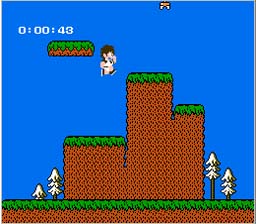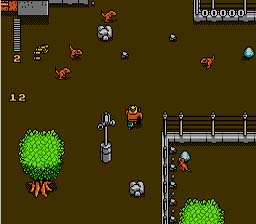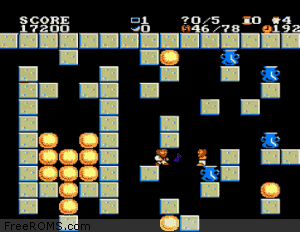The alternate title was "Peter Pan Becomes A Man"
The graphics leave much to be desired, but the gameplay is pure adventure, baby.
Fans of old computer games speak fondly of the King's Questand Space Questseries. They're well-written adventure games that reward your intuition and attention to detail. King's Quest V, a port from the PC to the NES, is no different. You play as King Graham, a man of the people, and your quest involves getting your castle back from the evil wizard, Mordack. Seems ol' Mordack cast a spell on the castle that lifted it clear off the ground and into the ether, along with your entire family. With the help of the friendly talking owl, Cedric, and Crispin, a kindly old wizard, your castle is as good as returned.
Old PC adventure games don't really have "gameplay," as console gamers would define it today. The majority of King's Quest Vis spent searching for items and using those items at the appropriate time. An easy example would be in the very beginning when you encounter a vengeful bear. The only way to get past this bear is if you looked through the barrel in the first town and discovered the old fish. Chuck the old fish at the bear to satiate his bloodlust and be on your way. If that sort of lateral thinking in a game doesn't wet your whistle, I wouldn't bother with King's Quest. This goes double for the outdated mechanics. As fond as I am for these games, I'm not fond of hitting Select any time I want to do anything. If you want to talk to people, buy something, use an item to interact with another item, you have to hit Select to bring up the menu, highlight whatever action you want to take with the cursor, then drag the cursor onto the item or person you want to interact with. It's awfully clunky, but considering that King's Questis a PC port, I'm of the mind that it could be much worse.
Truly King's Quest Vis a game you either enjoy and appreciate for its challenge or despise for how stupid it makes you feel. I personally believe that everyone should give it a shot, if only to appreciate how streamlined (and, in my opinion, incredibly easy) games have truly become.
B+


















































